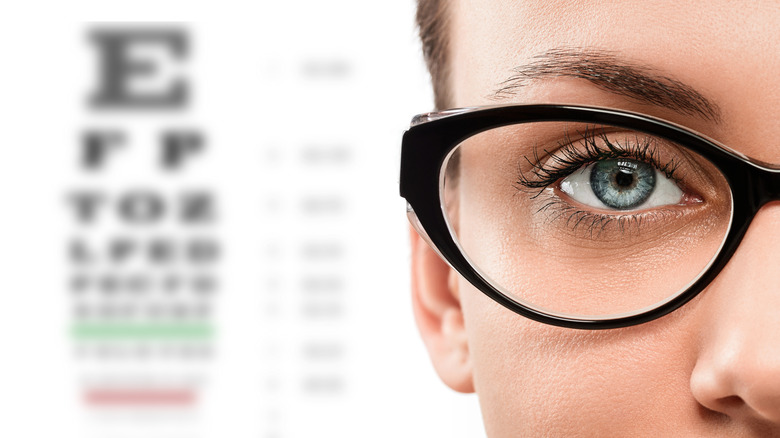What It Really Means To Have 20/20 Vision
Good eyesight is something that many of us take for granted. We wake up, open our eyes, and can easily see the time on our phone. But if you don't have perfect eyesight, you know what it feels like when things are just a little — or a lot — out of focus. If that happens to you, it probably means that you don't have 20/20 eyesight. And it turns out, most of us don't (via University of Iowa). So what does it mean when the optometrist congratulates you on having 20/20 vision?
Visual acuity, or how clear or sharp your vision is, can be measured by having someone stand a certain distance from one of those big charts with the letters on it and try to read the lines (via American Academy of Ophthalmology). The eye doctor is trying to find out how well you can see the details of the letters on the chart. Measurements are recorded as your distance in feet from the eye chart over the distance that someone with normal eyesight has to stand at to read the chart. A measurement of 20/20 is considered normal.
What happens if your vision isn't 20/20?
So let's say your eyesight is 20/50. That means that you can only read the line at 20 feet away from the chart, but a normal person can still read it when they are 50 feet away. So your vision is worse than normal (via American Academy of Ophthalmology).. But perhaps surprisingly, that doesn't always mean that a person with 20/20 vision has perfect vision or even healthy eyes (via Verywell Health). They may still have problems with the quality of their vision, depth perception, seeing colors, or a handful of other possible issues.
Someone can even be farsighted and still have 20/20 vision. Often, they strain their eyes to focus and are able to see with clarity, but the effort fatigues their eye muscles to the point that their vision eventually is no longer in focus. So if you're not one of the 35% of adults who are able to see with 20/20 vision without help, you may have options to help improve your visual acuity. The most common type of vision correction is wearing eyeglasses (via Cleveland Clinic). Depending on the amount of correction needed and other factors, you may be able to wear contact lenses. And some people may even choose to have corrective surgery to change the shape of the lens in their eye. Having 20/20 vision, whether you use corrective methods or just have it naturally, is one way to increase your safety and overall quality of life.


